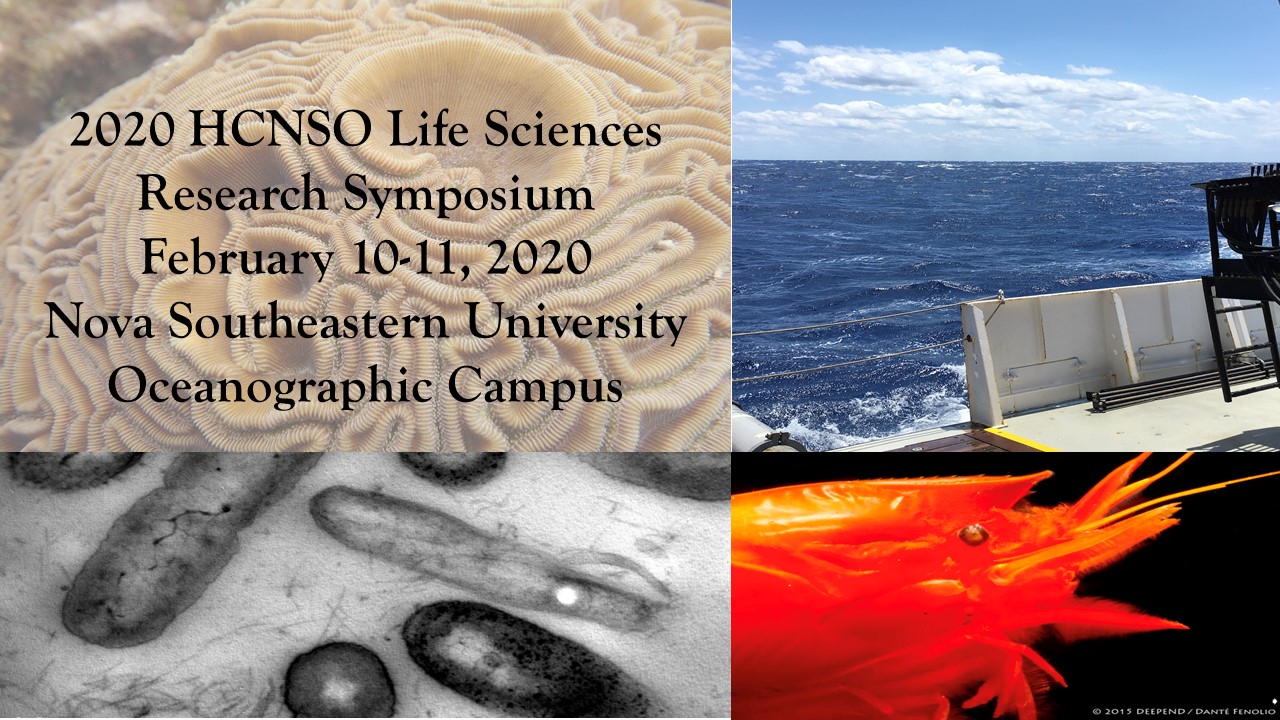Wave Patterns and Current Velocity Measurements at a Sharp Front Produced by Runoff from the Mississippi River in the Gulf of Mexico
Location
HCNSO Guy Harvey Oceanographic Center Nova Southeastern University
Start
2-11-2020 10:15 AM
End
2-11-2020 10:30 AM
Type of Presentation
Oral Presentation
Abstract
John Kluge1, Alexander Soloviev1, Cayla Dean1, Geoffrey Morrison1, Egbert Schwarz2, Susanne Lehner2, Hui Shen3, William Perrie3, Brian Haus4 1Nova Southeastern University Halmos College of Natural Science of Oceanography, Dania Beach, FL 33004 2German Aerospace Center Remote Sensing Technology Institute Oberpfaffenhofen 82234 Weßling, Germany 3Bedford Institute of Oceanography 1 Challenger Dr, Dartmouth, NS B2Y 4A2, Canada 4University of Miami RSMAS, Miami, FL, USA
Wave refraction measurements near an ocean front are typically collected remotely, either with satellite or airborne observations. In situ measurements of wave refraction patterns or current velocities near an ocean front are sparse. In this field experiment wave and current measurements were recorded in the vicinity of the sharp front caused by Mississippi River runoff in the Gulf of Mexico. Wave and current patterns were measured on both sides of the front using a Lagrangian surface drifter and a wave rider. The measurements were conducted as part of the Consortium for Advanced Research on Transport of Hydrocarbon in the Environment (CARTHE/GoMRI) Submesoscale Processes and Lagrangian Analysis on the Shelf (SPLASH) field campaign in April 2017.The front produced by runoff emanating from the Southwest Pass of the Mississippi River Delta was discovered by synthetic aperture radar (SAR) images. The wave rider and Lagrangian drifter were used for measurements at the sharp front on the northern edge of the jet. A Yost 3-Space accelerometer that measured the components of acceleration was mounted centrally inside the wave drifter. The accelerometer data was then used to calculate directional wave spectra on each side of the front. The Lagrangian surface drifter, used to map the current velocity field in the vicinity of the front, was deployed with one of three different drogue lengths (0.5, 3, 5.5 m). Successive deployments of each drogue length were conducted on each side of the front. The experimental design revealed wave and current velocity field differences across the front. The data set from this field experiment may help in planning future experiments with the goal of ground truthing SAR satellite imagery. The data will also help to expand the knowledge of oil spill propagation in areas of high freshwater outflow. Particularly, why some coastal areas were inundated with oil and others were not in the Gulf of Mexico after the Deep Water Horizon Oil Spill.
Wave Patterns and Current Velocity Measurements at a Sharp Front Produced by Runoff from the Mississippi River in the Gulf of Mexico
HCNSO Guy Harvey Oceanographic Center Nova Southeastern University
John Kluge1, Alexander Soloviev1, Cayla Dean1, Geoffrey Morrison1, Egbert Schwarz2, Susanne Lehner2, Hui Shen3, William Perrie3, Brian Haus4 1Nova Southeastern University Halmos College of Natural Science of Oceanography, Dania Beach, FL 33004 2German Aerospace Center Remote Sensing Technology Institute Oberpfaffenhofen 82234 Weßling, Germany 3Bedford Institute of Oceanography 1 Challenger Dr, Dartmouth, NS B2Y 4A2, Canada 4University of Miami RSMAS, Miami, FL, USA
Wave refraction measurements near an ocean front are typically collected remotely, either with satellite or airborne observations. In situ measurements of wave refraction patterns or current velocities near an ocean front are sparse. In this field experiment wave and current measurements were recorded in the vicinity of the sharp front caused by Mississippi River runoff in the Gulf of Mexico. Wave and current patterns were measured on both sides of the front using a Lagrangian surface drifter and a wave rider. The measurements were conducted as part of the Consortium for Advanced Research on Transport of Hydrocarbon in the Environment (CARTHE/GoMRI) Submesoscale Processes and Lagrangian Analysis on the Shelf (SPLASH) field campaign in April 2017.The front produced by runoff emanating from the Southwest Pass of the Mississippi River Delta was discovered by synthetic aperture radar (SAR) images. The wave rider and Lagrangian drifter were used for measurements at the sharp front on the northern edge of the jet. A Yost 3-Space accelerometer that measured the components of acceleration was mounted centrally inside the wave drifter. The accelerometer data was then used to calculate directional wave spectra on each side of the front. The Lagrangian surface drifter, used to map the current velocity field in the vicinity of the front, was deployed with one of three different drogue lengths (0.5, 3, 5.5 m). Successive deployments of each drogue length were conducted on each side of the front. The experimental design revealed wave and current velocity field differences across the front. The data set from this field experiment may help in planning future experiments with the goal of ground truthing SAR satellite imagery. The data will also help to expand the knowledge of oil spill propagation in areas of high freshwater outflow. Particularly, why some coastal areas were inundated with oil and others were not in the Gulf of Mexico after the Deep Water Horizon Oil Spill.


